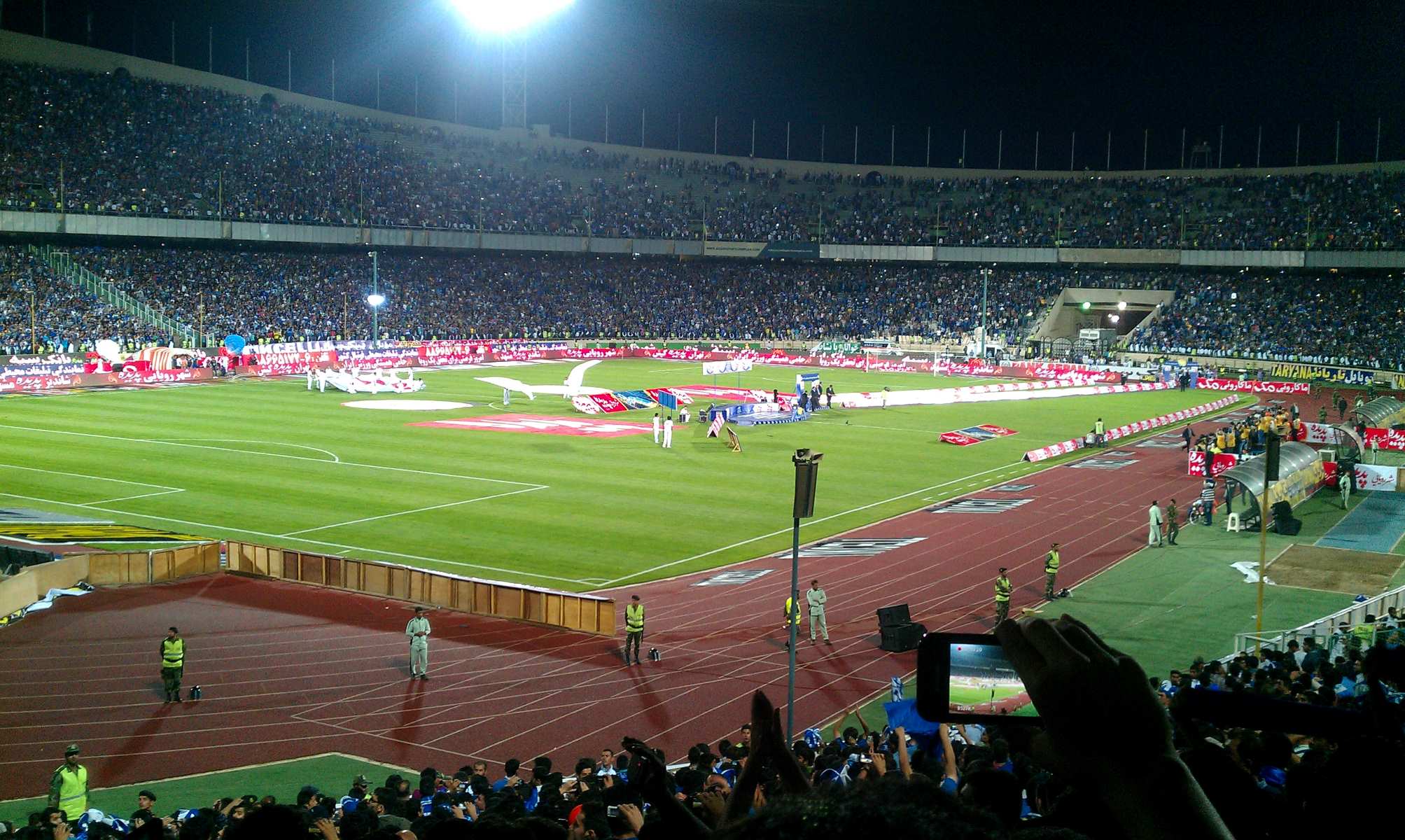
Azadi Stadium is an iconic landmark in Tehran, Iran, and holds great significance in the country’s sporting and cultural history. This impressive stadium has witnessed numerous historic moments, thrilling matches, and unforgettable events since its inauguration in 1971.
With a seating capacity of over 78,000, Azadi Stadium is the largest in Iran and ranks among the largest stadiums in the world. It has played host to various international football matches, including World Cup qualifiers and AFC Asian Cup games. Apart from football, the stadium has also hosted other sporting events such as wrestling, athletics, and concerts.
While Azadi Stadium may be famous for its role in sports, there are several surprising facts that many people may not be aware of. In this article, we will explore 15 fascinating facts about Azadi Stadium that demonstrate its historical, architectural, and cultural significance.
Key Takeaways:
- Azadi Stadium, located in Tehran, Iran, is a renowned sporting venue with a seating capacity of over 84,000. It has hosted FIFA World Cup qualifying matches and cultural events, making it a versatile and iconic landmark.
- The stadium’s distinctive arch design, artificial turf pitch, and state-of-the-art facilities contribute to its significance. Azadi Stadium symbolizes Iranian pride and unity, serving as a hub for sports and cultural events.
The Name “Azadi” Translates to “Freedom” in Persian
Azadi Stadium gets its name from the word “Azadi,” which means “freedom” in Persian. It was named as a tribute to the Iranian Revolution, recognizing the country’s struggle for independence.
The Stadium Can Accommodate Over 84,000 Spectators
Azadi Stadium is one of the largest stadiums in Asia and has a seating capacity of over 84,000 spectators. The impressive capacity makes it an ideal venue for hosting major sporting events and concerts.
Azadi Stadium Was Built in 1971
The construction of Azadi Stadium began in 1968 and was completed in The stadium was designed by architect Abdol-Aziz Farmanfarmaian and has since become an architectural landmark in Iran.
It Is the Home Stadium for the Iranian National Football Team
Azadi Stadium serves as the home ground for the Iranian national football team. The team has played numerous important matches at this stadium, including FIFA World Cup qualifiers and Asian Cup matches.
The Stadium Has Hosted FIFA World Cup Qualifying Matches
Azadi Stadium has been selected as a venue for several FIFA World Cup qualifying matches. The vibrant atmosphere and passionate fans make it a memorable venue for international teams.
Azadi Stadium Has Also Hosted Cultural Events
In addition to being a sporting venue, Azadi Stadium has also hosted cultural events. Concerts, religious gatherings, and political rallies have taken place within its premises, highlighting its versatile nature.
The Pitch at Azadi Stadium is Artificial Turf
To ensure optimal playing conditions, Azadi Stadium has an artificial turf pitch. This enables the pitch to be used year-round, regardless of weather conditions.
The Stadium Boasts State-of-the-Art Facilities
Azadi Stadium is equipped with modern amenities and facilities to enhance the spectator experience. It includes VIP boxes, media facilities, and spacious locker rooms for teams.
The First Goal at Azadi Stadium Was Scored by Hassan Rowshan
In the inaugural match at Azadi Stadium, which took place on October 21, 1971, Iranian football player Hassan Rowshan scored the first goal. This historic moment added to the significance of the stadium.
The Largest Attendance Recorded at Azadi Stadium is 128,000
In a match between the Iranian and Kuwaiti football teams in 1997, Azadi Stadium experienced its highest attendance with an estimated 128,000 spectators. The electric atmosphere created an unforgettable experience for the fans.
Azadi Stadium Has a Distinctive Arch Design
One of the standout features of Azadi Stadium is its distinctive arch design. The arches, which span across the outer facade, not only add to the stadium’s visual appeal but also provide structural stability.
A Renovation Project Was Undertaken in 2002
In 2002, Azadi Stadium underwent a significant renovation project to upgrade its facilities and improve overall functionality. These renovations further solidified its status as a premier sporting venue.
The Stadium Played a Role in Iran’s Hosting of the Asian Games
Azadi Stadium played a key role in Iran’s successful bid to host the 1974 Asian Games. It hosted the opening and closing ceremonies, as well as numerous athletic events during the games.
The Azadi Stadium Complex Includes Auxiliary Facilities
Besides the main stadium, Azadi Stadium also features auxiliary facilities such as indoor sports halls, swimming pools, and training centers. These facilities contribute to its status as a hub for sports and physical activities.
Azadi Stadium is a Symbol of Iranian Pride
Azadi Stadium holds deep cultural significance for Iranians, serving as a symbol of national pride and unity. It has witnessed historical moments and continues to be a source of inspiration for athletes and fans alike.
These 15 surprising facts about Azadi Stadium highlight its importance as a landmark sporting venue in Iran. From its architectural design to its cultural significance, Azadi Stadium has left an indelible mark on the sporting landscape of the country.
Conclusion
In conclusion, Azadi Stadium is not only a historic landmark but also a symbol of national pride and sportsmanship in Iran. With its impressive capacity, rich history, and unique architecture, it has played host to countless memorable sporting events and cultural performances. As one of the largest stadiums in the world, it continues to be an iconic venue that showcases the passion and love Iranians have for sports.Whether you’re planning to visit Azadi Stadium or simply learning more about it, these surprising facts add an extra layer of fascination to this remarkable landmark. From its architectural design to its role in shaping Iran’s sports history, Azadi Stadium stands as a testament to the country’s enduring legacy.Make sure to check it out and witness the grandeur of Azadi Stadium for yourself. It’s bound to leave you in awe of not just its size, but also its cultural significance.
FAQs
Q: When was Azadi Stadium built?
A: Azadi Stadium was built in 1971.
Q: What is the seating capacity of Azadi Stadium?
A: Azadi Stadium can accommodate up to 78,116 spectators.
Q: Which sporting events have been held at Azadi Stadium?
A: Azadi Stadium has hosted numerous sporting events, including football matches, athletics competitions, and even the Asian Games in 1974.
Q: How long is the running track at Azadi Stadium?
A: The running track at Azadi Stadium is 400 meters long.
Q: Is Azadi Stadium open to the public for tours?
A: Yes, Azadi Stadium offers guided tours for visitors to learn more about its history and architecture.
Q: Does Azadi Stadium have any nickname?
A: Azadi Stadium is often referred to as the “Azadi Tower of Sports” due to its distinct tower-like design.
Q: Is Azadi Stadium considered an important landmark in Iran?
A: Yes, Azadi Stadium holds immense cultural and historical significance in Iran, making it an important national landmark.
Q: How far is Azadi Stadium from Tehran city center?
A: Azadi Stadium is located approximately 10 kilometers west of Tehran city center.
Q: Are there any plans to renovate or expand Azadi Stadium?
A: Yes, there are plans to renovate and expand Azadi Stadium in the near future to further enhance its facilities and accommodate more spectators.
Q: Has any international football match been played at Azadi Stadium?
A: Yes, several international football matches, including World Cup qualifiers and AFC Asian Cup matches, have been played at Azadi Stadium.
Azadi Stadium's rich history captivates sports enthusiasts and cultural aficionados alike. From its early days as a beacon of freedom to hosting thrilling matches and unforgettable events, this iconic venue never fails to impress. But what about other stadiums that have left their mark on Iranian society? Yadegare Emam Stadium, for instance, boasts its own set of intriguing facts waiting to be explored. So why not satiate your curiosity and delve into the fascinating stories behind these remarkable arenas? You might just uncover some surprising tidbits along the way!
Was this page helpful?
Our commitment to delivering trustworthy and engaging content is at the heart of what we do. Each fact on our site is contributed by real users like you, bringing a wealth of diverse insights and information. To ensure the highest standards of accuracy and reliability, our dedicated editors meticulously review each submission. This process guarantees that the facts we share are not only fascinating but also credible. Trust in our commitment to quality and authenticity as you explore and learn with us.


